LBJ: "Dick...it has already been announced and you can serve with anybody for the good of America and this is a question that has a good many more ramifications than on the surface and we've got to take this out of the arena where they're testifying that Khrushchev and Castro did this and did that and kicking us into a war that can kill 40 million Americans in an hour. "
CBS - November 22nd and The Warren Report (1964) - OFFICIAL US GOVERNMENT OVERSEAS PROPAGANDA (U.S. Information Agency - USIA) from Spike EP on Vimeo.
National Archives and Records Administration
November 22nd and The Warren Report
U.S. Information Agency. (1982 - 10/01/1999)
ARC Identifier 50248 / Local Identifier 306.3914. This Columbia Broadcasting System (CBS) special news report features Walter Cronkite and Dan Rather as they presented taped interviews with individuals associated with the investigation into the assassination of President John F. Kennedy, along with the Warren Commission report findings that had just that day been released. Interviews include eyewitness accounts of the shooting, as well as taped interviews with Lee Harvey Oswald's wife, mother, and best friend.
"There are only two suspects in the shoot-down of the MH-17 Malaysian airliner over Ukraine on July 17th: the separatist rebels, whom the Ukrainian Government charge had shot it down mistaking it for one of the Ukrainian Air Force bombers that routinely drop bombs onto the separatists and their families and indiscriminately onto everyone else in that region; or otherwise the Ukrainian Air Force itself, as a means for President Obama to be able to win increased international sanctions against Russia for Russia’s support of those blamed rebels.
That’s it, and that’s all.
One of these two suspects, the Ukrainian Government, was granted by the other three member-states of the official MH-17 ‘investigating’ commission, a veto-power over anything that’s written into that ‘investigating’ report.
In other words, basically what exists is this: The Ukrainian Government gets to write the official ‘investigation’ report on that ‘accident.’ The other three Obama-allied nations will place their signatures onto it — or else there simply won’t be any such ‘final report.’
This agreement on Ukraine’s veto-power was signed on August 8th, by Ukraine, Australia, Belgium, and Netherlands, the four member-nations of the official ‘investigation.’ "
RR: I may be wholly wrong, but I think Mr. Warren would serve on anything you'd give him any publicity on.
LBJ: Well you want me to tell you the truth? You know what happened?
Bobby and them went up to see him today and he turned them down cold and said "no."
Two hours later I called him and ordered him down here and he didn't want to come.
I insisted he come, he came down here and told me no twice and I just pulled out what Hoover told me about a little incident in Mexico City and I say now, 'I don't want Mr. Khrushchev to be told tomorrow and be testifying before a camera that he killed this fellow and that Castro killed him and all I want you to do is look at the facts and bring in other facts you want in here, and determined who killed the President and I think you'd put on your uniform of World War I, fat as you are, and do anything you could to save one American life.
And I'm surprised that you the Chief Justice of the United States would turn me down.' And he started crying and said, well I won't turn you down. I'll just do whatever you say, but he turned the Attorney General down.
NOTE : By virtue of the Seperation of Powers, the President of the United States does not so much as have the authority to order the Chief Justice of the Supreme Court of the United States to the men's room;
But Earl Warren is a reservist in the US Military - and he received a direct order from his Commander in Chief...
Propaganda Notes
Series A: Bulletins
OX-274
67- (A) 22 September 1964
Warren Commission Report (Policy Recommendations as Stated in Propaganda Notes issue of 22 Sept.)
1. The long awaited Warren Commission Report, on its exhaustive investigation into the assassination of President Kennedy on November 22, 1963 and the subsequent murder of Lee Oswald by Jack Ruby, will be released sometime over the weekend. The Department of State is air pouching copies of the Report (based on some 20 volumes of hearings) to posts for selective presentation (upon formal release) to “editors, jurists, Government officials, other opinion leaders” after the formal release. (See attachment, State Circular 505, 19 September 1964, joint State-USIA message, with list of recipients). Copies of this Government Printing Office edition will be sent to field stations from headquarters.
2. Reports from around the world indicate that there is a strong belief in many countries that the assassination of the President was the result of a “political plot”; the unanswered interpretation that Ruby’s murder of Oswald was committed to prevent Oswald from revealing the purported conspiracy adds to this belief. Communist regimes have used both murders to denigrate American society and the release of the Report will undoubtedly be used as a new peg or the same purpose.
3. Covert assets should explain the tragedy wherever it is genuinely misunderstood and counter all efforts to misconstrue it intentionally – provided the depth of impact warrants such action. Communists and other extremists always attempt to prove a political conspiracy behind violence. In countries accustomed to assassination by political conspiracy, American dedication to institutions of law and government with stable administrative procedures can be described; and American Presidents can be shown to have been the victims (with the exception of Lincoln) of single, fanatical individuals.
4. Three commercial editions will be published as soon as possible after the formal release. KUWOLF/PROP has ordered 150 of Bantam’s publication but will evaluate the introductions of all three and inform operating Divisions of any drawbacks. Divisions should make bulk purchases for field use through regular channels.
Document Number: 871-388A
for FOIA Review on JUL 1976
Approximately 2:00 PM to 4:30 PM, 16 Dec 1963
. . .
CHAIRMAN: Gentlemen, is there anything further to come before the meeting?
MR. RANKIN: I'd like to say about the oath, if you will sign them when you have time and send them to me.
REP. BOGGS: Why don't we do that right now?
. . .
CHAIRMAN: Gentlemen, is there anything further to come before the meeting?
MR. RANKIN: I'd like to say about the oath, if you will sign them when you have time and send them to me.
REP. BOGGS: Why don't we do that right now?
MR. RANKIN: All right, and I'll send them to Justice Reed.
(The Commission members pause to sign their oath.)
MR. DULLES: I've got a few extra copies of a book that I passed out to our Counsel. Did I give it to you, Mr. Chief Justice?
CHAIRMAN: I don't think so.
MR. DULLES: It's a book written about ten tears ago giving the background of seven attempts on the lives of the President.
CHAIRMAN: I have not seen it.
MR. DULLES: It's a fascinating book, but you'll find a pattern running through here that I think we'll find in this present case. I hate to give you a paperback, but that's all there is.
CHAIRMAN: Paperback is good enough. Thank you very much.
REP. BOGGS: This piece in the current issue of the New Republic raises some interesting questions. You might like to read it.
MR. MC CLOY: This is very interesting.
REP. BOGGS: It is.
CHAIRMAN: The New Republic?
REP. BOGGS: The December 21st issue.
MR. MC CLOY: Called "Seeds of Doubt, Questions About The Assassination."
REP. BOGGS: It quotes stories from papers all over the country.
REP. FORD: When was the book written?
MR. DULLES: 1952. The last one is the attack on Truman. There you have a plot, but these other cases are all habitual, going back to the attack on Jackson in 1835. I found it very interesting.
MR. MC CLOY: The Lincoln assassination was a plot.
MR. DULLES: Yes, but one man was so dominant that it almost wasn't a plot.
These men do not exist.
And never did.
And if you are silly enough to believe that they might have, then you are a batshit crazy conspiracy theorist, because this conspiracy never happened, and these men were never tried and hung for participating in it.
In her autobiography, Living My Life, Emma Goldman described her two meetings with Leon Czolgosz who at the time was using the name Nieman.
"The subject of my lecture in Cleveland, early in May of that year, was Anarchism, delivered before the Franklin Liberal Club, a radical organization. During the intermission before the discussion I noticed a man looking over the titles of the pamphlets and books on sale near the platform. Presently he came over to me with the question: "Will you suggest something for me to read?" He was working in Akron, he explained, and he would have to leave before the close of the meeting. He was very young, a mere youth, of medium height, well built, and carrying himself very erect. But it was his face that held me, a most sensitive face, with a delicate pink complexion; a handsome face, made doubly so by his curly golden hair. Strength showed in his large blue eyes. I made a selection of some books for him, remarking that I hoped he would find in them what he was seeking. I returned to the platform to open the discussion and I did not see the young man again that evening, but his striking face remained in my memory.
The Isaaks had moved Free Society to Chicago, where they occupied a large house which was the centre of the anarchist activities in that city. On my arrival there, I went to their home and immediately plunged into intense work that lasted eleven weeks. The summer heat became so oppressive that the rest of my tour had to be postponed until September. I was completely exhausted and badly in need of rest. Sister Helena had repeatedly asked me to come to her for a month, but I had not been able to spare the time before. Now was my opportunity. I would have a few weeks with Helena, the children of my two sisters, and Yegor, who was spending his vacation in Rochester.
On the day of our departure the Isaaks gave me a farewell luncheon. Afterwards, while I was busy packing my things, someone rang the bell. Mary Isaak came in to tell me that a young man, who gave his name as Nieman, was urgently asking to see me. I knew nobody by that name and I was in a hurry, about to leave for the station. Rather impatiently I requested Mary to inform the caller that I had no time at the moment, but that he could talk to me on my way to the station. As I left the house, I saw the visitor, recognizing him as the handsome chap who had asked me to recommend him reading matter at the Cleveland meeting.
Hanging on to the straps on the elevated train, Nieman told me that he had belonged to a Socialist local in Cleveland, that he had found its members dull, lacking in vision and enthusiasm. He could not bear to be with them and he had left Cleveland and was now working in Chicago and eager to get in touch with anarchists."
Abraham Isaak, the editor of the anarchist journal, Free Society, issued a warning that he believed Leon Czolgosz was a spy.
"The attention of the comrades is called to another spy. He is well dressed, of medium height, rather narrow shouldered, blond, and about 25 years of age. Up to the present he has made his appearance in Chicago and Cleveland. In the former place he remained a short time, while in Cleveland he disappeared when the comrades had confirmed themselves of his identity and were on the point interested in the cause, asking for names, or soliciting aid for acts of contemplated violence. If this individual makes his appearance elsewhere, the comrades are warned in advance and can act accordingly."
In her autobiography, Living My Life, Emma Goldman described being arrested after the assassination of William McKinley.
"Some of the reporters did not seem to be losing sleep over the case. One of them was quite amazed when I assured film that in my professional capacity I would take care of McKinley if I were called upon to nurse him, though my sympathies were with Czolgosz." You're a puzzle, Emma Goldman," he said, "I can't understand you. You sympathize with Czolgosz, yet you would nurse the man he tried to kill." "As a reporter you aren't expected to understand human complexities," I informed him. "Now listen and see if you can get it. The boy in Buffalo is a creature at bay. Millions of people are ready to spring on him and tear him limb from limb. He committed the act for no personal reasons or gain. He did it for what is his ideal: the good of the people. That is why my sympathies are with him. On the other hand," I continued, "William McKinley, suffering and probably near death, is merely a human being to me now. That is why I would nurse him."
"I don't get you, you're beyond me," he reiterated. The next day there appeared these headlines in one of the papers: "EMMA GOLDMAN WANTS TO NURSE PRESIDENT; SYMPATHIES ARE WITH SLAYER." Buffalo failed to produce evidence to justify my extradition. Chicago was getting weary of the game of hide-and-seek. The authorities would not turn me over to Buffalo, yet at the same time they did not feel like letting me go entirely free. By way of compromise I was put under twenty-thousand-dollar bail. The Isaak group had been put under fifteen-thousand-dollar bail. I knew that it would be almost impossible for our people to raise a total of thirty-five thousand dollars within a few days. I insisted on the others being bailed out first. Thereupon I was transferred to the Cook County Jail.
The night before my transfer was Sunday. My saloon-keeper admirer kept his word; he sent over a huge tray filled with numerous goodies: a big turkey, with all the trimmings, including wine and flowers. A note came with it informing me that he was willing to put up five thousand dollars towards my bail. "A strange saloon-keeper!" I remarked to the matron. "Not at all," she replied; "he's the ward heeler and he hates the Republicans worse than the devil." I invited her, my two policemen, and several other officers present to join me in the celebration. They assured me that nothing like it had ever before happened to them - a prisoner playing host to her keepers. "You mean a dangerous anarchist having as guests the guardians of law and order," I corrected. When everybody had left, I noticed that my day watchman lingered behind. I inquired whether he had been changed to night duty. " No," he replied, " I just wanted to tell you that you are not the first anarchist I've been assigned to watch. I was on duty when Parsons and his comrades were in here."
Peculiar and inexplicable the ways of life, intricate the chain of events! Here I was, the spiritual child of those men, imprisoned in the city that had taken their lives, in the same jail, even under the guardianship of the very man who had kept watch in their silent hours. Tomorrow I should be taken to Cook County Jail, within whose walls Parsons, Spies, Engel, and Fischer had been hanged. Strange, indeed, the complex forces that had bound me to those martyrs through all my socially conscious years! And now events were bringing me nearer and nearer - perhaps to a similar end?
The newspapers had published rumours about mobs ready to attack the Harrison Street Station and planning violence to Emma Goldman before she could be taken to the Cook County Jail. Monday morning, flanked by a heavily armed guard, I was led out of the station-house. There were not a dozen people in sight, mostly curiosity seekers. As usual, the press had deliberately tried to incite a riot.
Ahead of me were two handcuffed prisoners roughly hustled about by the officers. When we reached the patrol wagon, surrounded by more police, their guns ready for action, I found myself close to the two men. Their features could not be distinguished: their heads were bound up in bandages, leaving only their eyes free. As they stepped to the patrol wagon, a policeman hit one of them on the head with his club, at the same time pushing the other prisoner violently into the wagon. They fell over each other, one of them shrieking with pain. I got in next, then turned to the officer. "You brute," I said, "how dare you beat that helpless fellow?" The next thing I knew, I was sent reeling to the floor. He had landed his fist on my jaw, knocking out a tooth and covering my face with blood. Then he pulled me up, shoved me into the seat, and yelled: "Another word from you, you damned anarchist, and I'll break every bone in your body!" "
Lyndon Didn't Do It : Fletcher Prouty "It's Couldn't Possibly Be" That Johnson Was Implicated from Spike EP on Vimeo.
Lyndon B. Johnson: How many shots were fired? Three?
J. Edgar Hoover: Three.
Lyndon B. Johnson: Any of them fired at me?
J. Edgar Hoover: No.
Lyndon B. Johnson: All three at the President?
J. Edgar Hoover: All three at the president and we have them. Two of the shots fired at the President were splintered but they had characteristics on them so that our ballistics expert was able to prove that they were fired by this gun. The President - he was hit by the first and third. The second shot hit the Governor the third shot is a complete bullet and that rolled out of the President's head It tore a large part of the President's head off and, in trying to massage his heart at the hospital on the way to the hospital, they apparently loosened that and it fell off onto the stretcher. And we recovered that... And we have the gun here also.
Lyndon B. Johnson: Were they aiming at the President?
J. Edgar Hoover: They were aiming directly at the President. There is no question about that. This telescopic lens, which I've looked through-it brings a person as close to you as if they were sitting right beside you. And we also have tested the fact that you could fire those three shots... within three seconds. There had been some stories going around... that there must have been more than one man because no one man could fire those shots in the time that they were fired...
Lyndon B. Johnson: How did it happen they hit Connally?
J. Edgar Hoover: Connally turned to the President when the first shot was fired and I think in that turning, it was where he got hit.
Lyndon B. Johnson: If he hadn't turned, he probably wouldn't have got hit?
J. Edgar Hoover: I think that is very likely.
Lyndon B. Johnson: Would the President've got hit with the second one?
J. Edgar Hoover: No, the President wasn't hit with the second one.
Lyndon B. Johnson: I say, if Connally hadn't been in his way?
J. Edgar Hoover: Oh, yes, yes, the President would no doubt have been hit.
Lyndon B. Johnson: He would have been hit three times.
J. Edgar Hoover: He would have been hit three times from the fifth floor of that building where we found the gun and the wrapping paper in which the gun was wrapped... and upon which we found the full fingerprints of this man Oswald. On that floor we found the three empty shells that had been fired and one shell that had not been fired... He then threw the gun aside and came down. At the entrance of the building, he was stopped by a police officer and some manager in the building told the police officer, "Well, he's all right. He works there. You needn't hold him." They let him go... And then he got on a bus... He went out to his home and got ahold of a jacket.... and he came back downtown... and the police officer who was killed stopped him, not knowing'who he was and not knowing whether he was the man, but just on suspicion. And he fired, of course, and killed the police officer. Then he walked.
Lyndon B. Johnson: You can prove that?
J. Edgar Hoover: Oh, yes, oh, yes, we can prove that. Then he walked about another two blocks and went to the theater and the woman at the theater window selling the tickets, she was so suspicious the way he was acting, she said he was carrying a gun... He went into the theater and she notified the police and the police and our man down there went in there and located this particular man. They had quite a struggle with him. He fought like a regular lion and he had to be subdued, of course, and was then brought out and... taken to the police headquarters....
Lyndon B. Johnson: Well your conclusion is: (1) he's the one that did it; (2) the man he was after was the President; (3) he would have hit him three times, except the Governor turned.
J. Edgar Hoover: I think that is correct.
Lyndon B. Johnson: (4) That there is no connection between he and Ruby that you can detect now. And (5) whether he was connected with the Cuban operation with money, you're trying to...
Oswald in Mexico : How Lyndon Johnson and J. Edgar Hoover Blackmailed the Joint Chiefs and Averted World War III from Spike EP on Vimeo.
Had this other, parallel, much more immediate military U-Turn been successfully rammed through the JCS and the NSC, Bundy's indiscretion would have been far less incongruous with all that was going on;
Remember the Day Planner in the Pentagon Papers - 22/11/1963, 11am.
"The President approves the draft of the National Security Action Memo summarising the new consensus of the Cabinet members in attendance at the Honolulu Conference" (I'm paraphrasing)
This is classic civil service - sneak everything through during the changeover and pretend it was all already agreed - Eisenhower never approved an invasion of Cuba, Jack Kennedy never approved the reversal of the initial Vietnam personnel withdrawals, and my guess is that he never approved the Palace Coup/Invasion of Cuba.
Haig and Vance put the plans through on the Friday, under his authority, without reference to the President.
Because that's who this is - Cyrus Vance and Al Haig.
And this is a real, bootstrap operation - this is sub-rosa not just to the NSC, CIA and DIA, let alone NATO; this is is below even the level of the Joint Chiefs, this is going on at the level of the Army General Staff in the Pentagon....

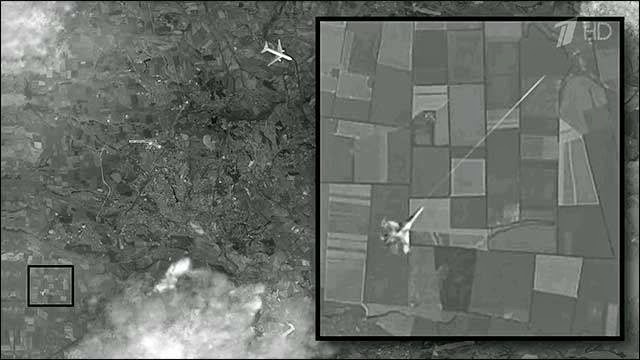






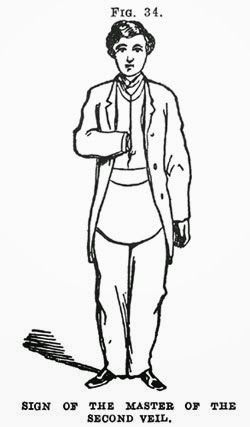
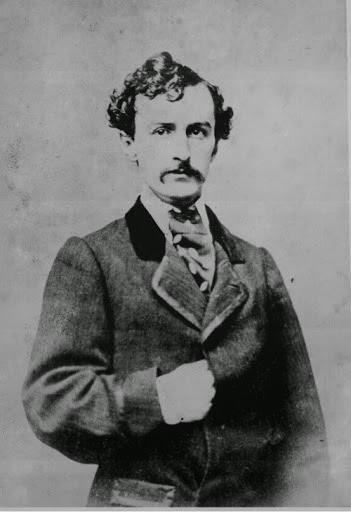




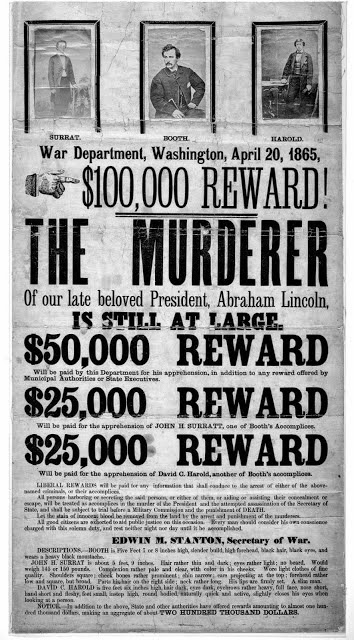
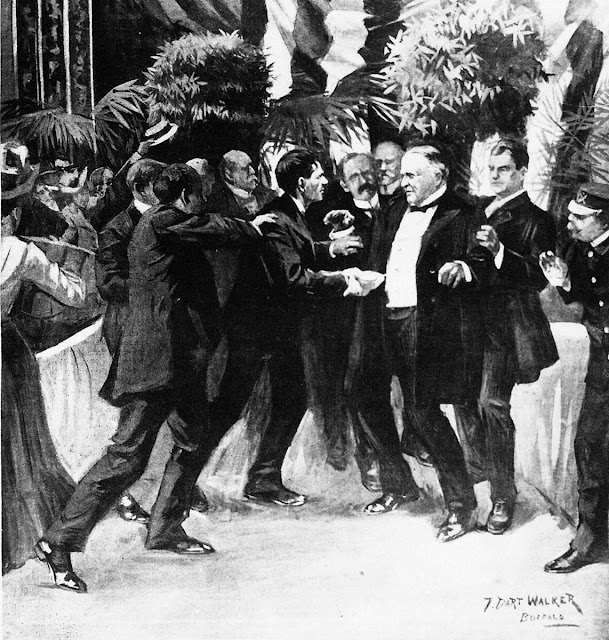

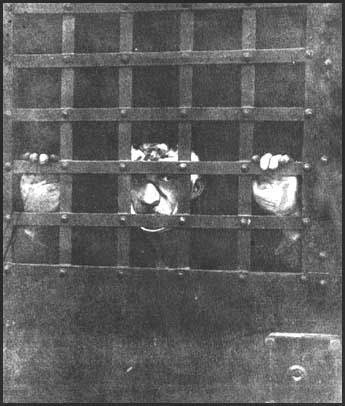



No comments:
Post a Comment